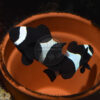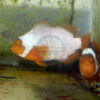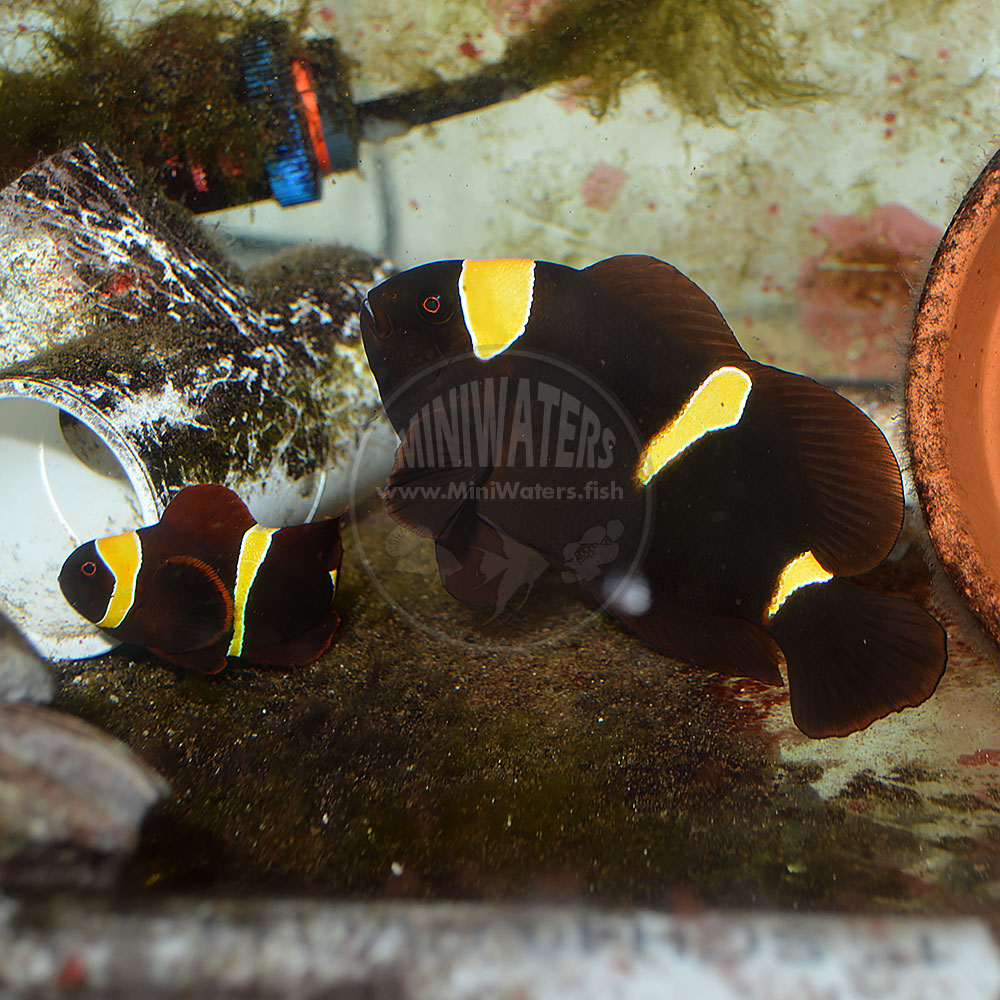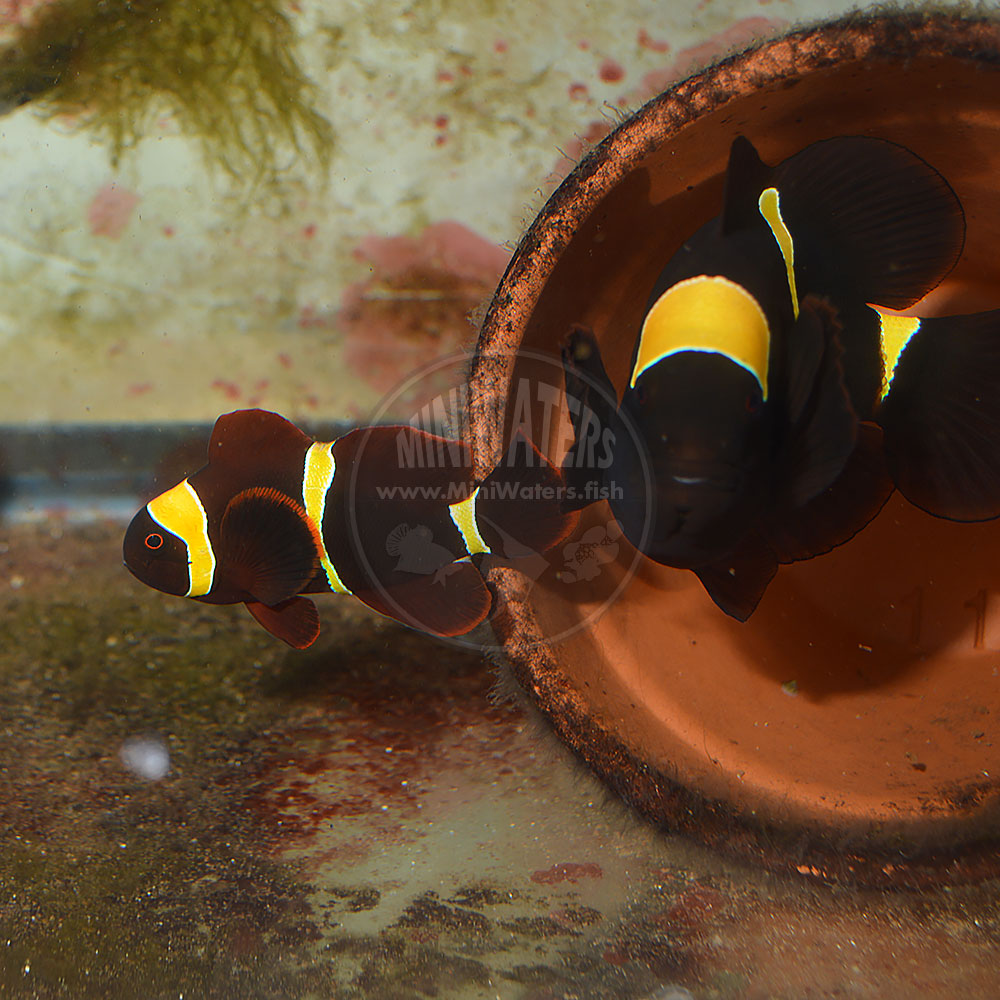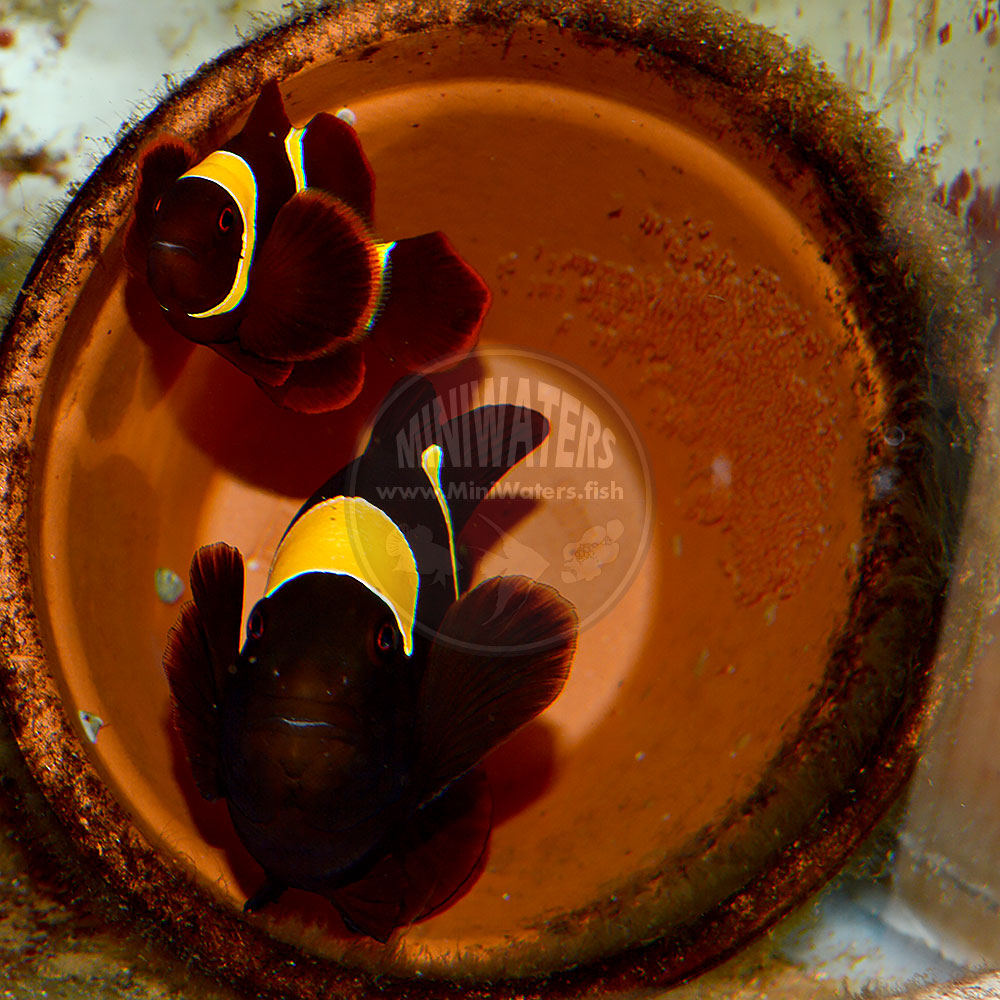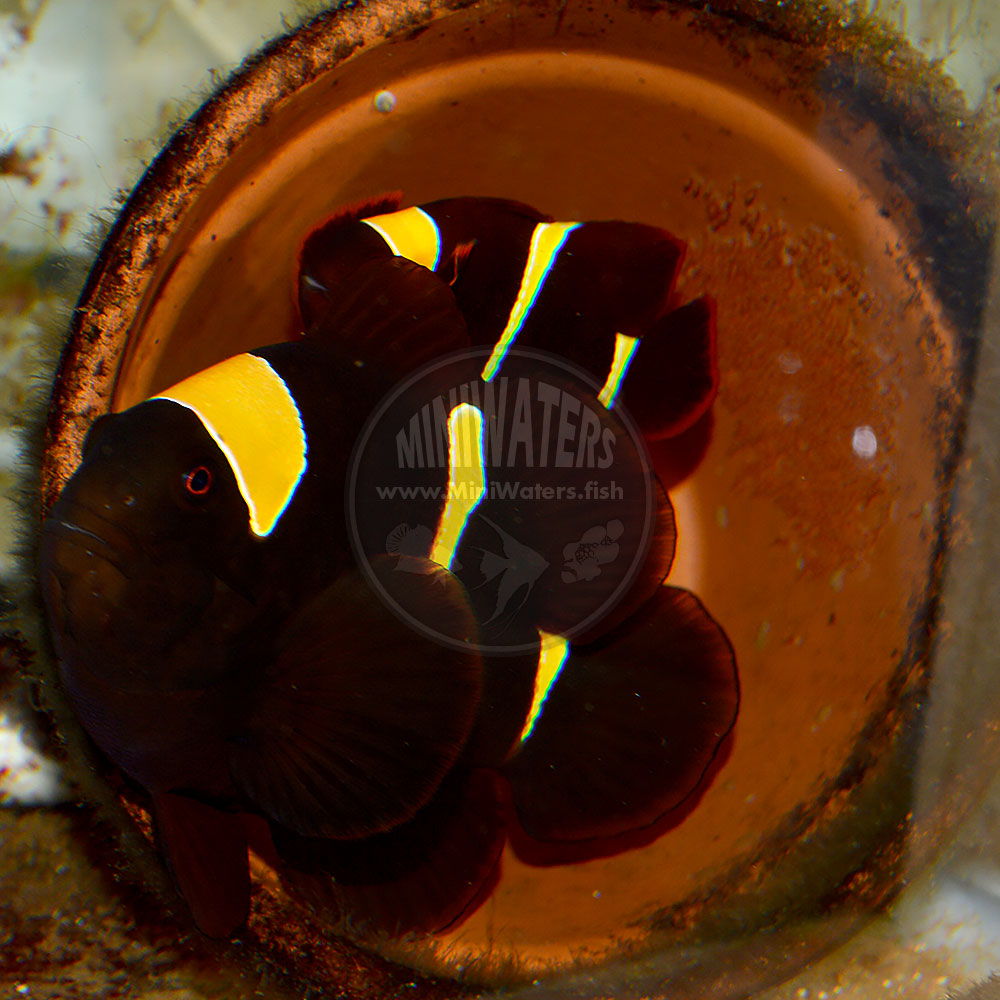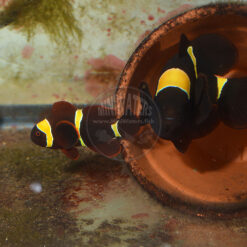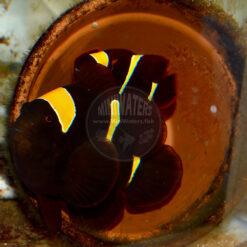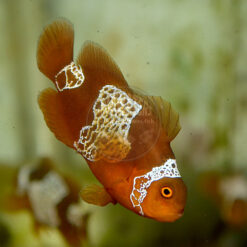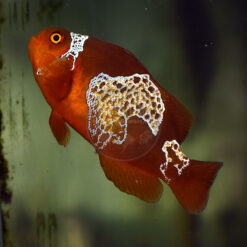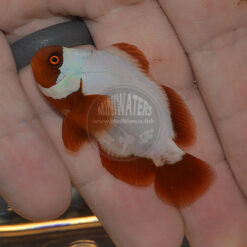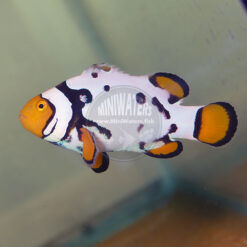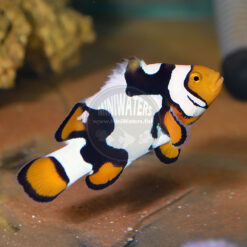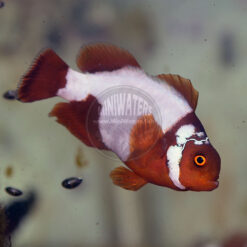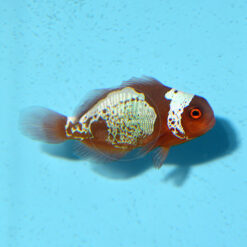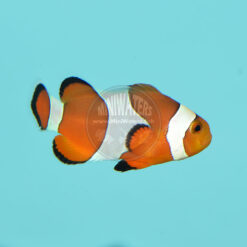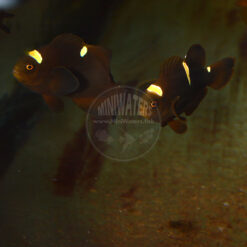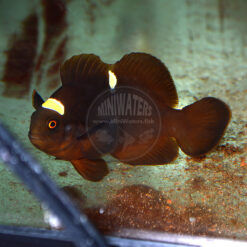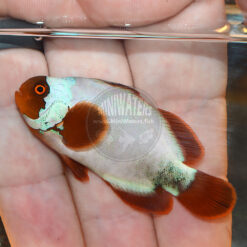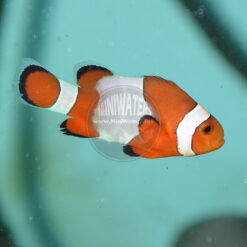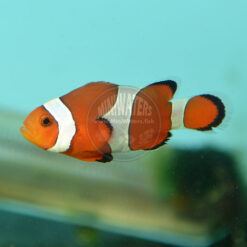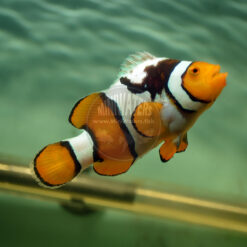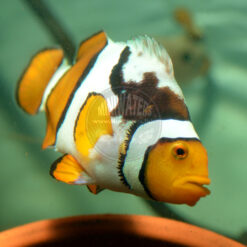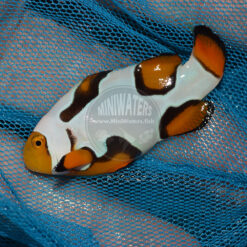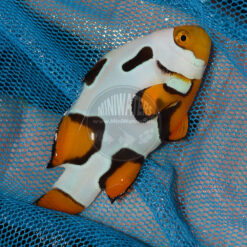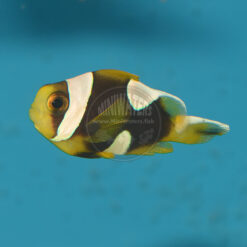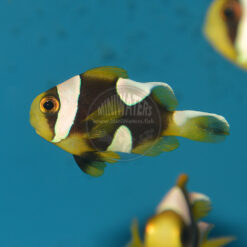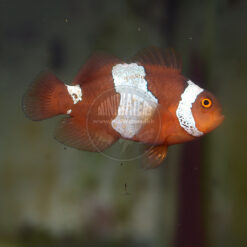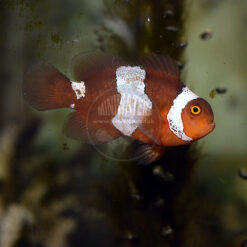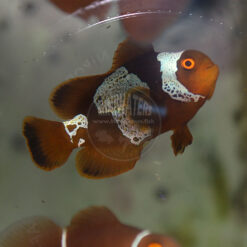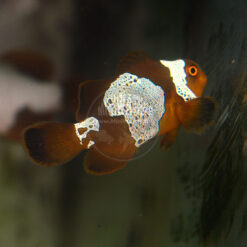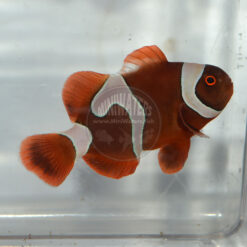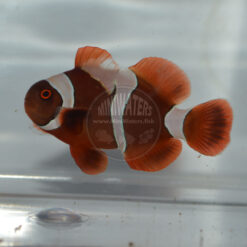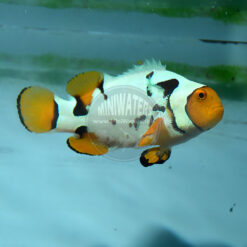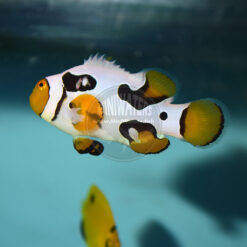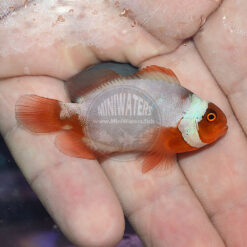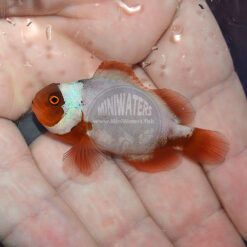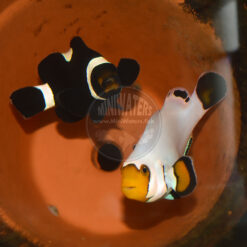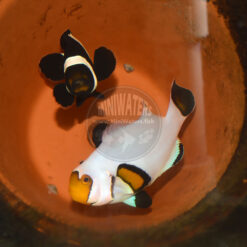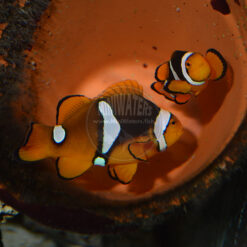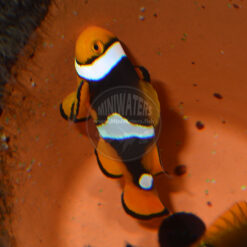Premnas sp. epigrammata “Gold Stripe Maroon” Clownfish Pair, Proven, 2-9-2016 WYSIWYG
Original price was: $599.00.$399.00Current price is: $399.00.
This is a WYSIWYG listing – these are the exact fish you are purchasing.
Yes, the title is a mouthful but it says it all – this is a proven breeding pair of Gold Stripe Maroon Clownfish (GSM) from Doty Aquaculture. The male is an outcross F1 which was reared some years back by local aquarist Jay Hansen; the origins of the female aren’t clear, but she is suspected to be wild. In any event, this is an unrelated pairing, and it throws nice offspring.
The pair resided in Doty’s main reef display where they spawned routinely for a few years; more recently they’ve been moved into the fishroom, being replaced by a Gold Nugget X Gold Flake pairing in the display. Doty is unsure if the pair has resumed spawning or not following the move, as he simply hasn’t paid close attention to them. As many of you probably already know, moving a pair of spawning fish can set them off for weeks, months, even longer. Updated – sure enough, they’re spawning again – see the new images from 2-23-2016 in the gallery.
My guestimates on the size? The female is perhaps 4-4.5″, the male 2.5″?
It is important to note that with the purchase of a proven pair of clownfish, all bets are off; we cannot guarantee that they’ll resume breeding or that they’ll even remain compatible following the move. If there is a DOA within this pair pair, 50% of the purchase price will be credited / refunded. Your purchase of a pair is your acknowledgement and acceptance of these additional terms.


